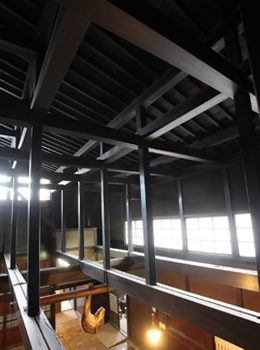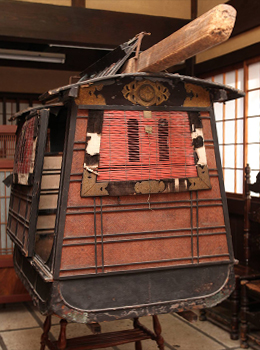Reservations
/Inquiries

Under the shogunate’s direct rule, the Kusakabe family, a merchant under the trade name “Taniya,” prospered as a purveyor to the Tokugawa shogunate (represented by the local magistrate).
In 1852, Kusakabe served as a kakeya, or a lender to fund payments to the government, and then went into the money changing business.
The family’s residence caught fire in the 1875 conflagration, but what was completed four years after the fire, or in 1879, is the current residence.
People of Hida, the wood country, originally have excellent architectural skills, and are called “Hida artisans.”
The Hida artisans have produced a number of splendid buildings to date.
The master builder of this residence was then-famous workman Jisuke Kawashiri.
He devoted his skills to this building, completing a magnificent residence preserving the exact architectural style of the Edo period.
The two-story main building is made entirely of Japanese Cypress, with gable walls, stepped roofs, and partially double height hall.
Beams and post columns are structured robustly, the roofs are modestly sloped, and the eaves are wide.
In addition, the latticed bay window in the facade, embedded lattice, variable window cut, the wooden parts finished with dark brown paint (red iron oxide mixed with soot); all of these are the features characteristic to the townhouse structure, or machiya structure, of Takayama remaining from the Edo period.
There are two other earthen storehouses.
The buildings were designated as important cultural properties by the national government in 1966, the first private house of the Meiji architecture to be designated as such, and since then have been open to public as a folk museum.
To date, we have carefully conserved the buildings with a sole hope; to welcome here as many people as possible to get them acquainted with Takayama, Kusakabe, and their history and culture.

